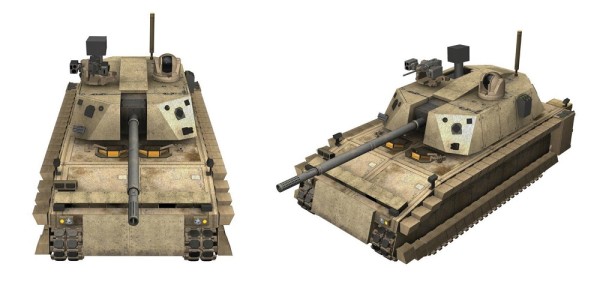

With the establishment of its new Futures Command, the Army pinky swears that the problems that doomed its $18 billion Future Combat Systems program in the last decade will not recur.
- On Friday, senior Army leaders announced the service was consolidating its modernization efforts in a single command that will be located in Austin, Texas. The city was selected based on a number of factors, including the availability of talent from the private sector, access to top-tier academic institutions, and quality of life.
- Task & Purpose asked Army officials how the new command will prevent a repeat of the Future Combat Systems debacle — an eight-year Army effort to develop revolutionary new vehicles, communications networks, drones, and other technology that bled cash until it was mercifully put to sleep by then-defense secretary Robert Gates in 2009. The failure was so colossal that the Army has still not recovered, nearly a decade later.
- By consolidating the Army’s modernization enterprises under one roof, Futures Command is meant to make the Army’s acquisition system faster and more efficient, said Army Secretary Mark Esper: “You now have a single commander in charge of everything from the future force design and concepts all the way through how we spend our RDT&E; [Research, Development, Test, and Evaluation] dollars to the prototyping and testing and soldier involvement into acquisition and ultimately to fielding.”
- Army Undersecretary Ryan McCarthy, who was serving in the defense secretary’s office when Future Combat Systems was cancelled, said the program’s fundamental flaw was that “the operational concept and the technical concepts were not linked.” Since the concepts for technology kept changing, the program lasted longer than intended, increasing costs. Futures Command, he said, is meant to bring key-decision makers together to “cut the number of layers between the information and the leadership.”
- Another change is thenew command will be focused solely on what the Army needs in the future, so it will not be distracted by the needs of the current fight, said Army Vice Chief of Staff Gen. James McConville. “You can have people thinking about the future, they develop the concepts, they look at the technology, they work side-by-side and they come up with the type of materiel that we’re going to need to be successful in the future,” he said.
- The Army needed to centralize its modernization enterprise because none of the commands currently conducting research and development was focused on “the deep future,” said Chief of Staff Gen. Mark Milley. “We’re in the midst of a change in the very character of war and we didn’t have an organization solely dedicated to that,” Milley said. “That’s important. Our analysis indicates that it will avoid a lot of avoid a lot of the pitfalls of previous program failures.”
WATCH THIS: